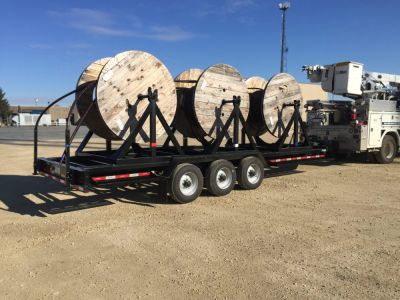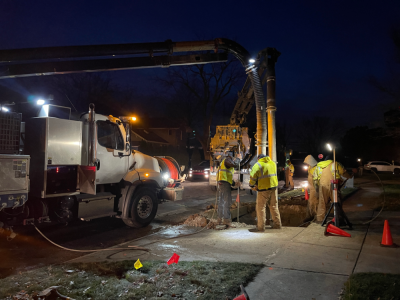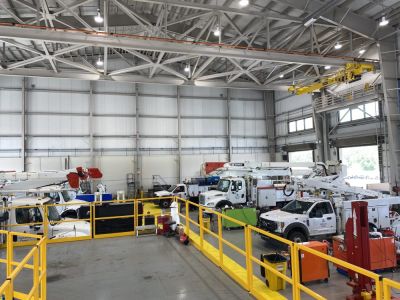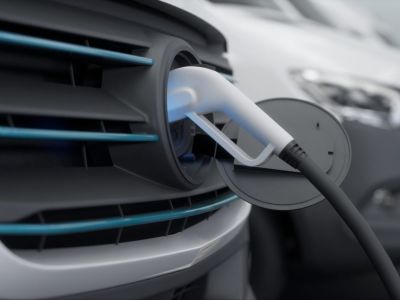Grace Suizo

Grace Suizo
Grace Suizo has been covering the automotive fleet industry since 2007. She spent six years as an editor for five fleet publications and has written more than 100 articles geared toward both commercial and public sector fleets.

The Latest Developments in Aerial Equipment Safety
Efforts to improve aerial work platform safety have fueled multiple recent technological innovations now available for use by utility organizations. Among the critical features found in modern bucket trucks are collision-mitigation systems and reverse sensors and camera systems, according to Chris Shallenberg, national sales manager for PALFINGER North America (www.palfinger.com). “These features ensure the vehicle […]

Keys to Crafting a Strong Fleet Telematics RFP
Developing a strong telematics request for proposal (RFP) is a critical and somewhat complex process that can present a host of potential challenges. To learn more about what it takes for utility fleet professionals to successfully navigate this task, UFP spoke with Beth Daiber, superintendent of field support and analysis for Ameren Illinois, and Steven […]

Spec’ing Cable Reel Trailers: 12 Common Errors to Avoid
| Grace Suizo | Equipment
Well-spec’d cable reel trailers enable utility crews to work safely and efficiently. But before they take ownership of new equipment, fleet professionals must successfully complete the spec’ing process – which means avoiding the many errors it’s possible to make. Three subject matter experts recently shared advice with UFP on sidestepping these 12 common spec’ing mistakes. […]

In-House vs. Outsourced Maintenance: Key Decision Points for Utility Fleets
Among the significant decisions a utility fleet manager may face is whether to outsource vehicle maintenance work or handle it in-house. What do you need to know to make the right choice for your operation? UFP recently interviewed two industry veterans to identify key decision points. According to Elizabeth Daiber, superintendent of field support and […]

Spec’ing Truck-Mounted Compressors: Errors to Avoid
| Grace Suizo | Equipment
Two activities are critical to a fleet manager’s successful search for new truck-mounted compressors. First is gaining a full understanding of the application, vehicle constraints and long-term needs. Second is determining the correct specifications – based on the application – to ensure equipment performance, efficiency and longevity. In a recent interview with UFP, Vanair’s John […]

Crafting an Effective Shop Safety Policy
Creating and maintaining a comprehensive shop safety policy is essential for any utility fleet. Both James Kuha, transportation operations supervisor at Central Hudson Gas & Electric (CenHud), and Brian Johnson, fleet engineering and technical services manager at Alabama Power Co., emphasize the importance of a robust safety framework that prioritizes employee well-being and operational efficiency. […]

Best Practices for Developing an In-House Maintenance Policy for EVs
Although some utilities outsource electric vehicle maintenance, those fleet managers exploring the idea of handling it in-house can follow best practices and industry standards to create a comprehensive maintenance policy tailored to the unique needs of EVs. The first step in developing such a policy is to conduct a thorough assessment of the fleet’s specific […]

The Latest Developments in Trailer Telematics
| Grace Suizo | Equipment
The strategic implementation of telematics in utility fleet trailers is not just an upgrade – it’s a transformative step toward smarter, safer, more sustainable utility fleet operations, according to Greg Spiropulos, business development manager for Geotab (www.geotab.com) “All of the benefits extend to the bottom line,” he said. “Telematics can generate considerable cost savings by […]

Maintaining Productivity Amid the Challenge of Extended Lead Times
Fleet managers continue to see some of the longest lead times in decades, with supply and delivery disruptions significantly hampering the industry. Across the board, every size of truck and car and every type of rolling asset has been impacted, according to Matt Gilliland, director of operations and business support for Nebraska Public Power District […]

Addressing Ergonomics in Utility Fleet Vehicles
| Grace Suizo | Equipment
It’s no secret that there are myriad items a utility fleet manager must consider when spec’ing vehicles for their fleet. Among those are the vehicles’ ergonomic features, which are intended to provide greater operator comfort and efficiency. According to Pete Gnatowski, director of sales, manufacturing and distribution for global automotive services organization Holman (www.holman.com), “When […]

